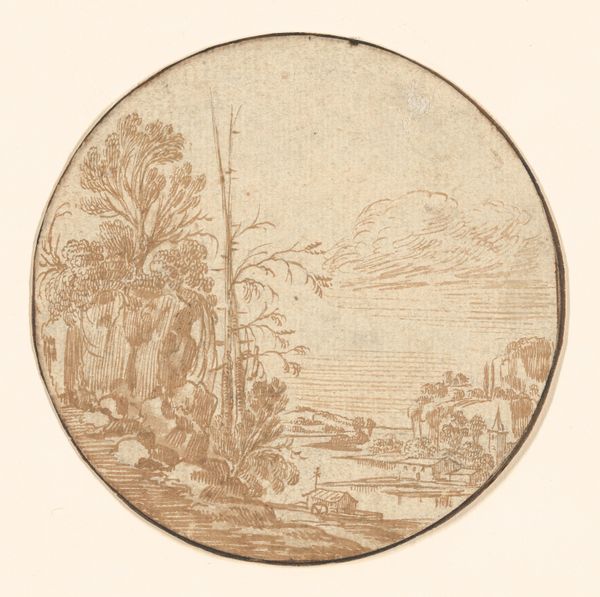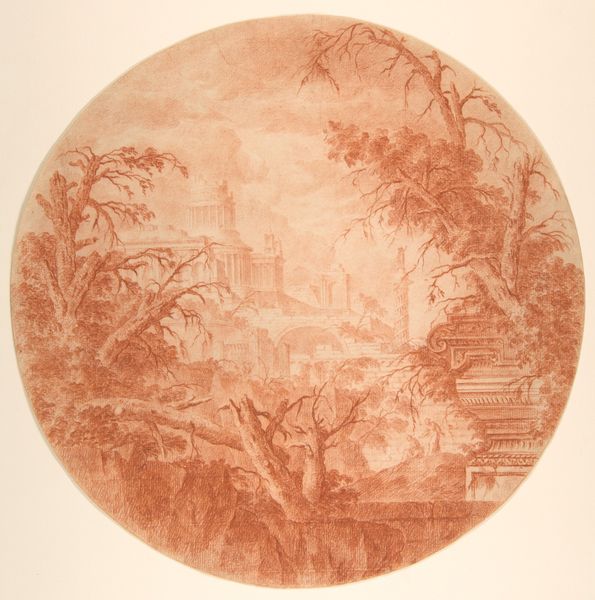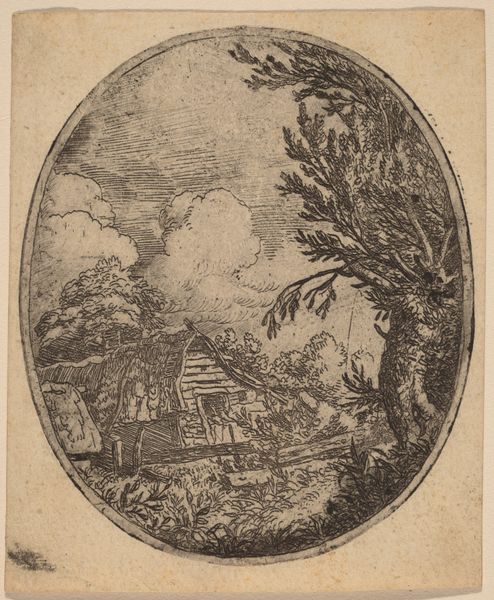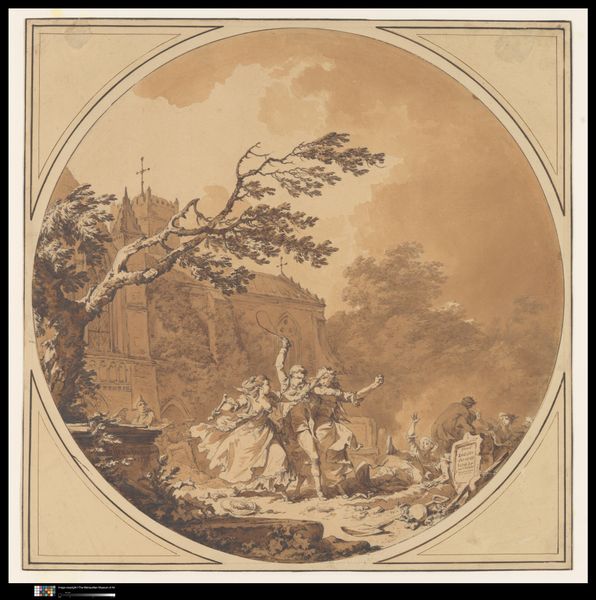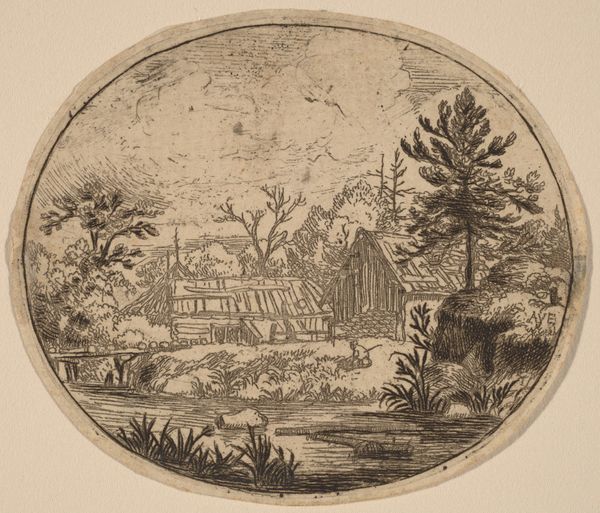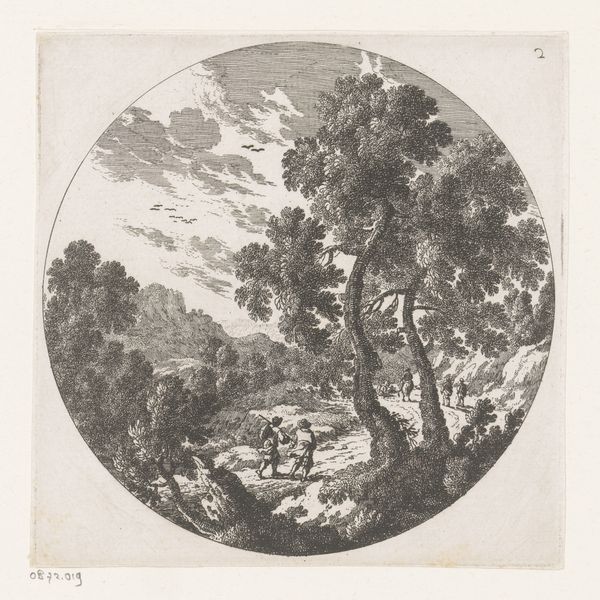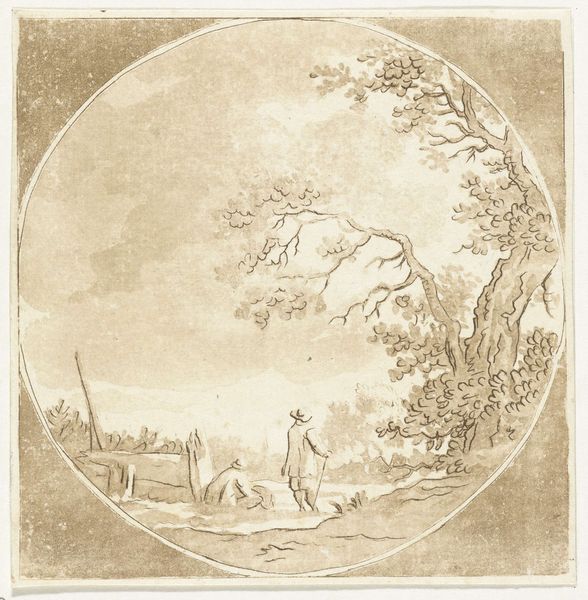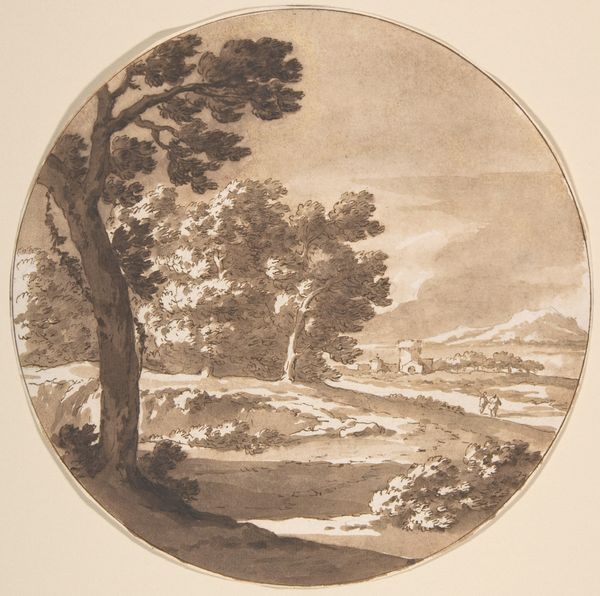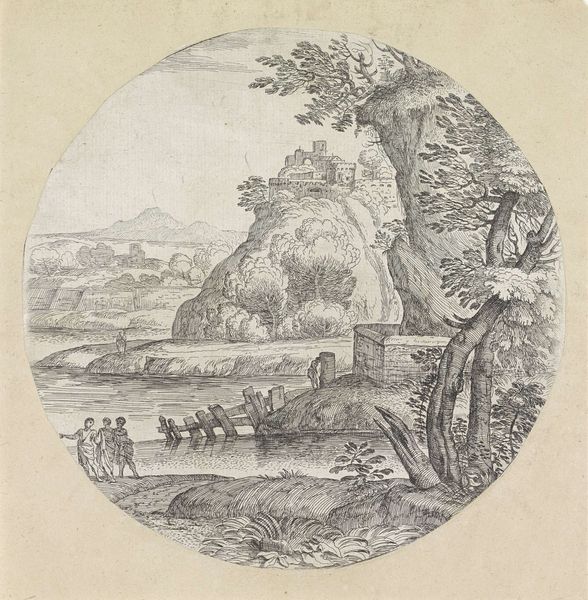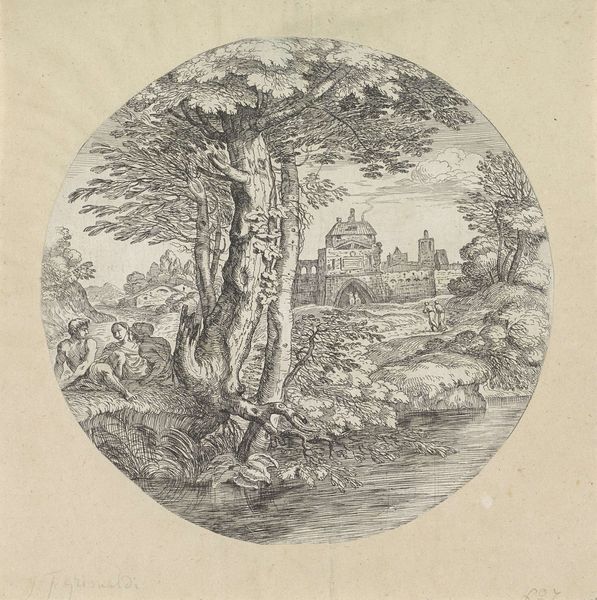
Rocky Landscape With a Bridge and a House 1620 - 1638
0:00
0:00
drawing, print, etching
#
drawing
#
dutch-golden-age
# print
#
etching
#
old engraving style
#
landscape
#
etching
#
house
Dimensions: Diameter: 3 3/4 in. (9.6 cm)
Copyright: Public Domain
Editor: Here we have Charles Cornelisz. de Hooch's "Rocky Landscape With a Bridge and a House," created sometime between 1620 and 1638. It's a drawing, an etching, and also a print. It's all brown ink, and gives off a rustic feeling, like a scene observed directly from nature. How do you interpret this piece? Curator: I see an active engagement with the materiality of the etching process. The lines aren’t just depicting a scene; they are revealing a whole system of production and circulation. Editor: Could you expand on that? Curator: Consider the Dutch Golden Age context. Etchings like this weren’t simply aesthetic objects. They were commodities. De Hooch is engaging with the burgeoning print market, where images of landscape became increasingly popular for a growing middle class. The relatively simple materials – the plate, the acid, the press - allowed for reproduction on a scale unseen before. It challenges traditional boundaries. Where do we draw the line between fine art and the means to create such objects for mass production? Editor: So you’re saying the *making* of the work is as significant as the image itself? Curator: Precisely. Look at the lines—the way they vary in thickness and density, reflecting the labor involved in creating the plate. The seemingly simple landscape then becomes a testament to the shifts in labour and production during this time. Consider, who owned the means of producing the copperplates, how were they circulated, who could afford them and for what reasons? What does this all say about society's view of landscape art? Editor: I hadn't considered that. It’s fascinating to think about the social and economic forces intertwined with this image. It's much more than just a pretty picture, really a sign of a larger socioeconomic shift in how people consumed art and landscapes at the time! Curator: Indeed! Looking through a materialist lens brings a completely different understanding.
Comments
No comments
Be the first to comment and join the conversation on the ultimate creative platform.
